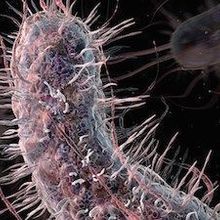Login
Subscribecancer diagnosis

Why Some HPV Infections Carry More Cervical Cancer Risk
Dan Robitzski | Feb 2, 2023 | 5 min read
Where and how human papillomavirus integrates itself into the human genome steers the infection’s clinical outcomes, finds a large, multifaceted study.

Multi-Gene Panels in Hereditary Cancer: Cause for Caution?
Qiagen | Jul 14, 2022 | 1 min read
Learn where scientists need to exercise awareness when interpreting next-generation sequencing data for cancer screening.

Genetic Mutations Can Be Benign or Cancerous—a New Method to Differentiate Between Them Could Lead to Better Treatments
Ryan Layer, The Conversation | May 27, 2022 | 5 min read
Tumors contain thousands of genetic changes, but only a few are actually cancer-causing. A quicker way to identify these driver mutations could lead to more targeted cancer treatments.

A Nose by Any Other Name: Tracking the Scent of Tumor Metabolic Waste
Iris Kulbatski, PhD | Apr 11, 2022 | 3 min read
The unique odor profiles of tumors can be used to develop diagnostic sensing tools.

Could Cancer’s Microbiome Help Diagnose and Treat the Disease?
Jef Akst | Mar 14, 2022 | 10+ min read
A growing appreciation of the bacterial assemblages that live within tumors has researchers striving to understand and capitalize on their role.

Infographic: Putting Cancer’s Unique Microbiomes to Use
Jef Akst | Mar 14, 2022 | 1 min read
From diagnosis to tracking treatment responses, bacteria and other microbes in the blood, gut, and tumors of cancer patients may provide helpful hints for improving their care.

Assigning Meaning: Genetic Variant Interpretation in Hereditary Cancer
Qiagen | Jan 19, 2022 | 1 min read
Improving the reliability of genetic variant annotation and clinical interpretation

Watch a Trained Pup Detect Prostate Cancer From a Urine Sample
Asher Jones | Feb 18, 2021 | 1 min read
Good girl, Florin!

Dogs Are Teaching Machines to Sniff Out Cancer
Asher Jones | Feb 18, 2021 | 5 min read
In a proof-of-concept study, researchers used dogs’ diagnoses of prostate cancer to inform a machine learning algorithm with the goal of one day detecting cancers with canine-level accuracy.

Banking on Blood Tests
Jyoti Madhusoodanan | Apr 1, 2016 | 7 min read
How close are liquid biopsies to replacing current diagnostics?

Next Generation: Souped-up Probiotics Pinpoint Cancer
Kate Yandell | May 28, 2015 | 3 min read
Genetically engineered commensal bacteria help researchers detect cancer metastases in mouse livers.
